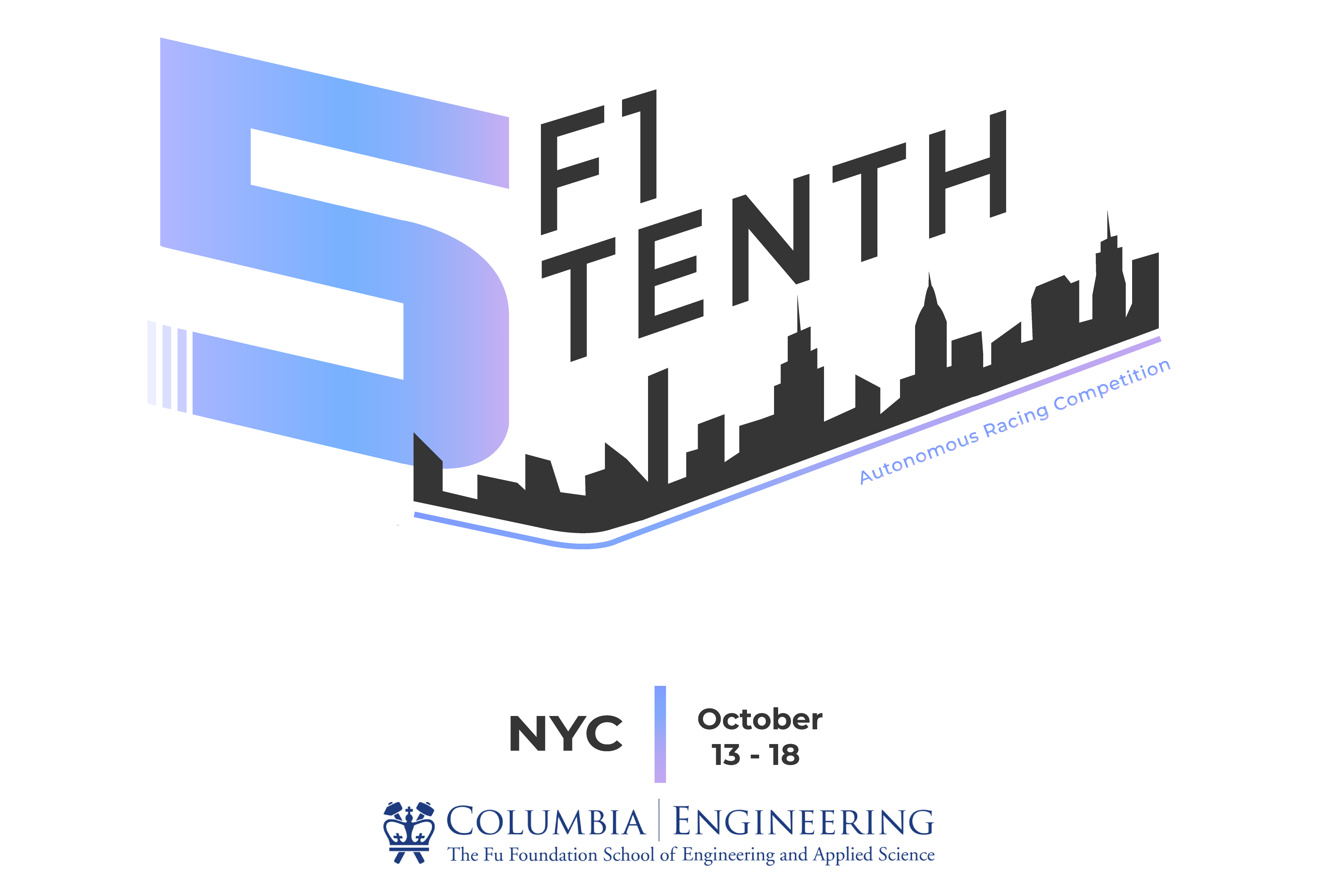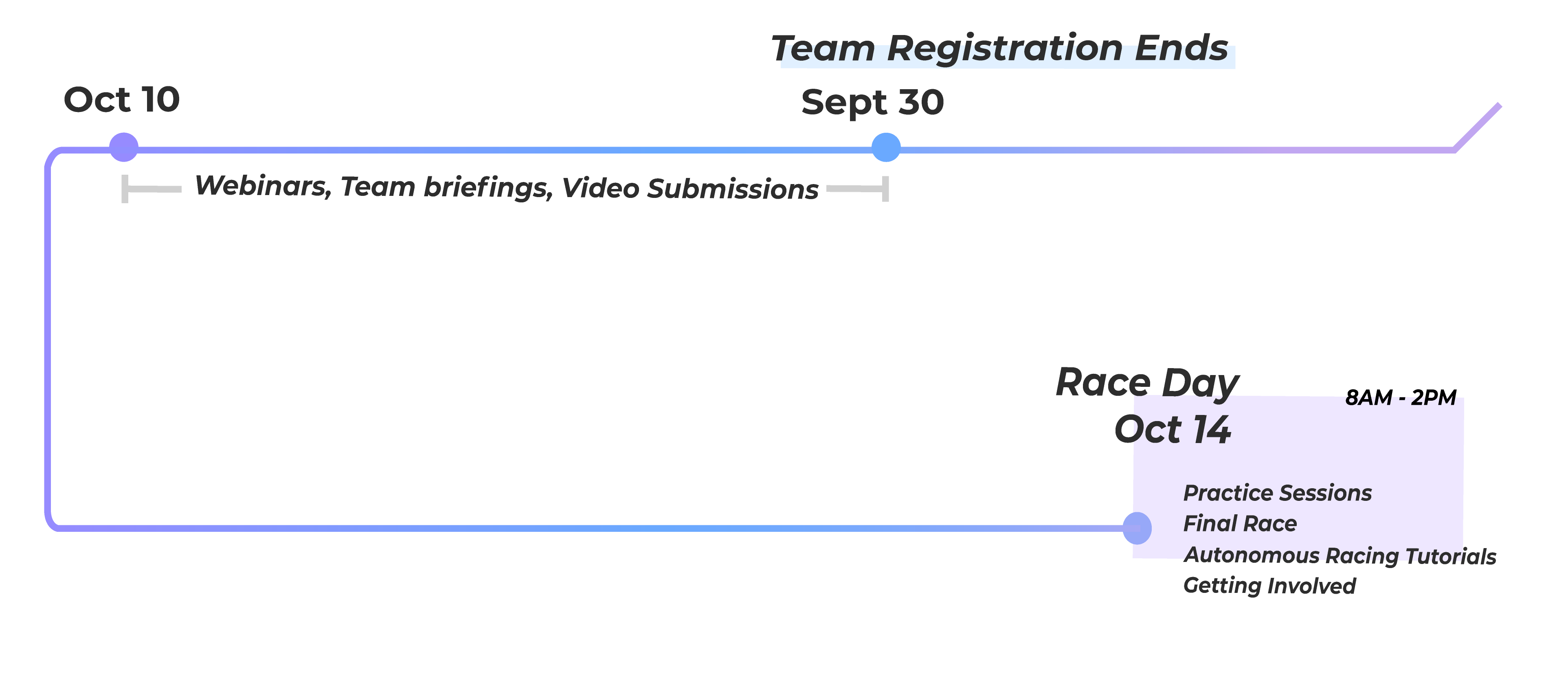These are the latest rules for the F1 Tenth Autonomous Racing Competitions as of Feburary 2019.
Please go over this document in its entirety, as it has significantly changed.
Vehicle Classes
We will have two vehicle classes for the compeition:
- F1/10 Restricted Class
- F1/10 Open Class
A team may participate in both classes, if they choose to do so. It can
have 2 different cars, one for each class, or use the same car for both
classes (in which case, of course, that one car must meet the
restrictions of the Restricted class).
F1/10 Restricted Class will only allow cars which meet the following specifications:
- A 1/10 scale rally car chassis equivalent to the Traxxas model 74054 type is allowed.
-
Example:
traxxas.com/products/models/electric/ford-fiesta-st-rally
-
Use this example for reference in terms of dimensions. See further description for restrictions on motor ratings.
-
Four-wheel drive, and two wheel drive versions are both allowed
> in this class.
- Only the use of stock tires, or equicvalent - in size and profile, is allowed.
-
Example stock tire:
traxxas.com/products/parts/7473R
-
No special traction modifications are allowed, this includes:
- Applying any liquids or gels of any kind to the stock tires
- Using alternate racing tires
- Use of NVIDIA Jetson TX2 or an equivalent capability processor or anything of lower spec is allowed.
- Use of Hokuyo 10LX or an equivalent LIDAR range sensor or anything with a lower spec is allowed.
- Multiple LIDARS are allowed, as long as they are all equivalent to, or lower spec than, the Hokuyo 10LX.
- There are no restrictions on the use of cameras, encoders, or custom electronic speed controllers.
- Use of Brushless DC motor equivalent to Vellineon 3500 or anything of lower spec is allowed.
It is up to the teams to demonstrate that they meet the above
specifications for racing in the restricted class.
Note: The examples provided are only for reference. The competition is
not affiliated in any way with the vendor Traxxas.
F1/10 Open Class will allow cars which are outside the restricted specifications but still adhere to the following limitations:
- Car dimensions should be within 10% of the dimensions of the car required in Restricted class.
(This is to make sure that it can fit comfortably in the racing track, and that it can compete with other
cars in head-to-head race.)
- Only electric drive motors are allowed.
That's all! There are no other restrictions on mechanical chassis, sensors, or on-board computers.
Race Classes
We will have have two different racing classifications:
- Time Trial Race
- Head to Head Race
To be eligible to compete and win prizes in either classification, you
must demonstrate the ability to remotely issue a stop signal to bring your car to a
*safe* stop. This will typically mean that the car comes to a
complete halt when it receives the signal. Issuing the stop signal
must not require you to be in close proximity to the car;
specifically, you will be seated at one end of the track, and the
car at the other. This will be tested by the organizers prior to
the race during the practice session
Time Trial Race
-
Multiple heats are held where the goal of each car is to set as many
laps as possible with the least (ideally no) amount of crashes.
-
We award both consistency and speed.
-
For each heat (typically 3-5 mins), we will log the number of laps
set and your fastest lap time.
-
Multiple heats allow you to change the car setup/parameters to try
being more aggressive, or safe.
-
Details about restart procedures, and crashes are announced prior to
the race in the practice session since they depend on the track
layout.
Head-to-head Race
- The organizers will decide your car's eligibility to go
head-to-head. Here is the creiteria that will help us decide that,
and which you can replicate prior to compeition day:
-
Static obstacle avoidance:
We will place cardboard/foam
obstacles (with width and height similar to the restriced
class dimensions) in the track at random locations and you
need to demonstrate that the car can safely avoid them.
-
Moving obstacle avoidance:
we will slide the cardboard obstacles
on the track, and your car must avoid these obstacles
-
If your car collides often with the track or the obstacles, it
won't be eligible for head-to-head racing.
-
The code you demonstrate is the code that will race. e.g. you
can't demonstrate one code base at slow speed for obstacel
avoidance, then run another at high speeds and crash.
We understand that the F1/10 head-to-head race is challengeing, it is
impossible for the rules to be comprehensive, so we will use 'common
sense' to make that determination. For example, if your car appears to be
rear-ending another vehicle and causing any perceivable damage, it may
be removed from the race. We don't want cars to get damaged.






